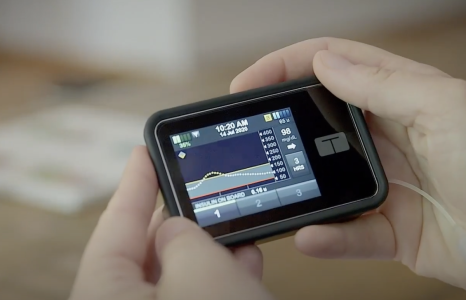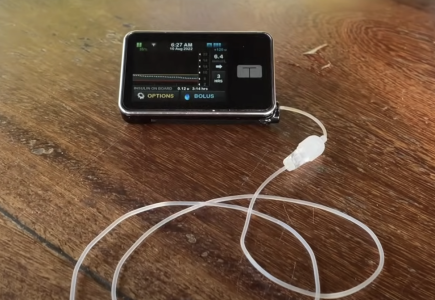Urgent warning for some insulin pump users: What you need to know right now
By
Veronica E.
- Replies 0
If you or someone you care for uses an insulin pump, there’s an important safety alert you should know about.
A major manufacturer has reported a malfunction in one of its popular models that could interrupt insulin delivery without warning.
For people managing diabetes, this kind of error can have serious—and potentially dangerous—health consequences.
The issue has already been linked to hundreds of reported incidents across the US, prompting both company action and regulatory oversight.
Knowing what’s happening and how to respond can help you stay safe and avoid complications.

Tandem Diabetes Care, Inc., a California-based manufacturer of insulin pumps, has issued an urgent correction for certain t:slim X2 insulin pumps.
According to the US Food and Drug Administration (FDA), an error called “Malfunction 16” can cause the pump to stop delivering insulin.
The malfunction can also cut off communication between the pump, your continuous glucose monitor (CGM), and the Tandem t:slim mobile app.
This means users could miss both the insulin they need and the alerts that track their blood sugar levels—two critical elements of daily diabetes care.
Insulin pumps provide a steady and precise supply of insulin, helping to keep blood sugar within a healthy range.
If the pump stops working, blood sugar can rise quickly, leading to hyperglycemia.
The Centers for Disease Control and Prevention (CDC) notes that symptoms of hyperglycemia include extreme thirst, blurry vision, weakness, dry mouth, headaches, and frequent urination.
If untreated, it can require emergency care or hospitalization—especially risky for older adults or those with other health conditions.
As of August 12, the FDA had received 700 confirmed reports of adverse events linked to this malfunction, with 59 cases involving injury.
No deaths have been reported.
Tandem Diabetes Care has been notifying affected customers directly, providing guidance on what to do if a “Malfunction 16” alarm appears.
If you use a t:slim X2 insulin pump but haven’t received a notice, check your email, mail, and contact the company to confirm your device’s status.

The company is developing a software update to better detect early signs of the problem, such as speaker failure, and to add persistent vibration alerts for users who might miss an audio alarm.
Once ready, Tandem will send instructions on installing the update to all affected users.
Until then, customers are encouraged to contact Tandem’s technical support at [email protected] or call 1-877-801-6901 if they see a Malfunction 16 alert or have concerns.
This incident highlights the importance of staying proactive with health technology. To reduce risks:
If you or a loved one uses a t:slim X2 insulin pump, take a few minutes to confirm whether your device is affected.
Acting quickly can prevent serious complications, and staying informed ensures you’re ready if an issue arises.
Read next: Ten patients, no more insulin—are we getting closer to curing diabetes?

Have you experienced a device alert or recall? Share your story or tips for managing diabetes during technical issues—your insight could help others navigate similar situations.
A major manufacturer has reported a malfunction in one of its popular models that could interrupt insulin delivery without warning.
For people managing diabetes, this kind of error can have serious—and potentially dangerous—health consequences.
The issue has already been linked to hundreds of reported incidents across the US, prompting both company action and regulatory oversight.
Knowing what’s happening and how to respond can help you stay safe and avoid complications.

Regularly checking medical devices and staying updated on safety alerts can help prevent serious health risks. Image Source: YouTube / CNBC.
What’s happening?
Tandem Diabetes Care, Inc., a California-based manufacturer of insulin pumps, has issued an urgent correction for certain t:slim X2 insulin pumps.
According to the US Food and Drug Administration (FDA), an error called “Malfunction 16” can cause the pump to stop delivering insulin.
The malfunction can also cut off communication between the pump, your continuous glucose monitor (CGM), and the Tandem t:slim mobile app.
This means users could miss both the insulin they need and the alerts that track their blood sugar levels—two critical elements of daily diabetes care.
Also read: Barbie introduces first doll with type 1 diabetes which includes a real glucose monitor and an insulin pump
Why this matters for diabetes management
Insulin pumps provide a steady and precise supply of insulin, helping to keep blood sugar within a healthy range.
If the pump stops working, blood sugar can rise quickly, leading to hyperglycemia.
The Centers for Disease Control and Prevention (CDC) notes that symptoms of hyperglycemia include extreme thirst, blurry vision, weakness, dry mouth, headaches, and frequent urination.
If untreated, it can require emergency care or hospitalization—especially risky for older adults or those with other health conditions.
Also read: The overlooked drink that can help you stay hydrated with diabetes, say dietitians
How widespread is the problem?
As of August 12, the FDA had received 700 confirmed reports of adverse events linked to this malfunction, with 59 cases involving injury.
No deaths have been reported.
Tandem Diabetes Care has been notifying affected customers directly, providing guidance on what to do if a “Malfunction 16” alarm appears.
If you use a t:slim X2 insulin pump but haven’t received a notice, check your email, mail, and contact the company to confirm your device’s status.

A t:slim X2 insulin pump, used by many to manage diabetes, is currently the subject of a safety alert. Image Source: YouTube / Type One Talks.
Also read: You’re probably not getting enough of this diabetes-fighting nutrient
Steps you should take now
- Check your device – Watch for any Malfunction 16 alerts and follow the company’s guidance if you see one.
- Stay informed – Make sure your contact details are current with Tandem so you receive updates.
- Monitor your health – If you experience hyperglycemia symptoms, check your glucose immediately and seek medical advice.
- Report problems – The FDA’s MedWatch program allows you to report device issues, helping improve safety tracking.
Also read: Are you ignoring life-saving alerts? Ensure your diabetes app alerts are never missed again!
What’s being done to fix it?
The company is developing a software update to better detect early signs of the problem, such as speaker failure, and to add persistent vibration alerts for users who might miss an audio alarm.
Once ready, Tandem will send instructions on installing the update to all affected users.
Until then, customers are encouraged to contact Tandem’s technical support at [email protected] or call 1-877-801-6901 if they see a Malfunction 16 alert or have concerns.
Also read: Could this vitamin play a role in lowering blood sugar?
Staying safe with any medical device
This incident highlights the importance of staying proactive with health technology. To reduce risks:
- Register your device so you’re on the manufacturer’s notification list.
- Install updates promptly to fix vulnerabilities and improve performance.
- Have a backup plan in case of device failure, including manual insulin supplies.
- Stay connected through support groups or trusted communities for timely advice.
If you or a loved one uses a t:slim X2 insulin pump, take a few minutes to confirm whether your device is affected.
Acting quickly can prevent serious complications, and staying informed ensures you’re ready if an issue arises.
Read next: Ten patients, no more insulin—are we getting closer to curing diabetes?
Key Takeaways
- Certain t:slim X2 insulin pumps have a Malfunction 16 error that can stop insulin delivery and disconnect from monitoring systems.
- The FDA has received 700 reports of related incidents and 59 injuries, with no reported deaths.
- Tandem Diabetes Care is developing a software update to improve early detection and provide persistent alerts.
- Users should monitor for alerts, stay updated on company notices, and report any issues to the FDA’s MedWatch program.
Have you experienced a device alert or recall? Share your story or tips for managing diabetes during technical issues—your insight could help others navigate similar situations.






